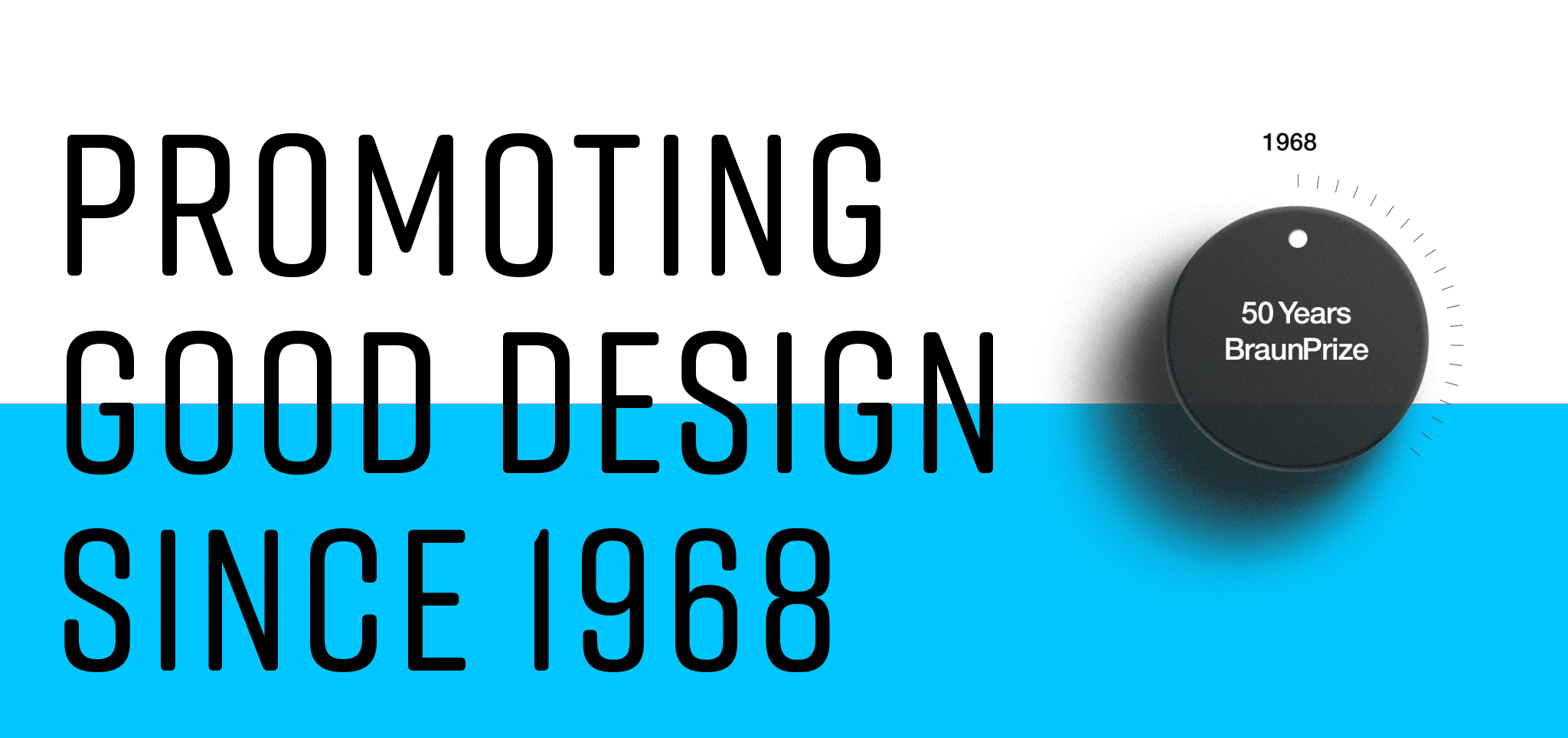Why do we promote design?
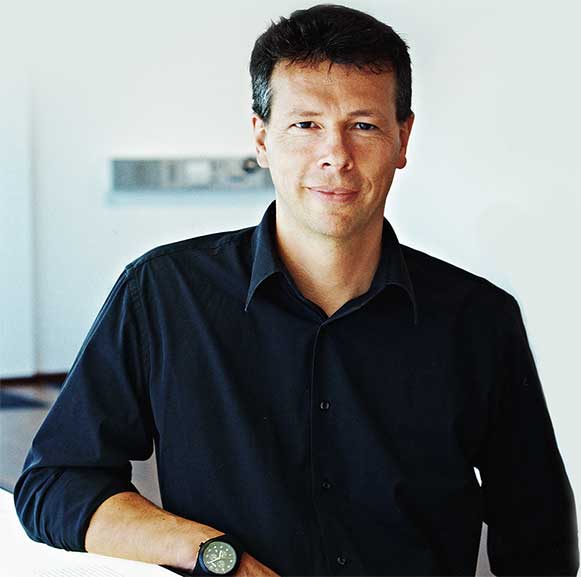 Prof. Oliver Grabes
Prof. Oliver GrabesHead of Braun Design and Chairman of the BraunPrize
“When Erwin Braun, son of Braun founder Max Braun, established Germany´s first international design prize in 1968 – the BraunPrize – it was originally introduced to stimulate public debate about design. This was at a time when understanding and awareness of design and its positive benefits were largely unknown.
Five decades later, the focus on promoting design itself is no longer the highest priority. Today industrial design has become an integral part of the product development process, and design strongly influences many people´s lives.
Despite the fact that the level of design has improved since the 1960’s, the world has become a more complicated and demanding place. Good design today has to meet much higher standards than ever before, and must integrate sustainability and complex technology successfully into people´s lives and social behavior. The quality of our future depends on how well we can leverage knowledge and creativity to find solutions to the challenges of tomorrow.
read more
With this in mind, the intention of the BraunPrize today is to encourage people to act responsibly, to innovate in the field of product development and design, to generate ideas that have not yet been conceived, and to create product concepts that no one has yet imagined. Ideally this is a kick-start for design talent and new ideas on their way to change the world. The BraunPrize has evolved while staying true to its original intention: Promoting Excellence in Design and Thinking.”
Five decades later, the focus on promoting design itself is no longer the highest priority. Today industrial design has become an integral part of the product development process, and design strongly influences many people´s lives.
Despite the fact that the level of design has improved since the 1960’s, the world has become a more complicated and demanding place. Good design today has to meet much higher standards than ever before, and must integrate sustainability and complex technology successfully into people´s lives and social behavior. The quality of our future depends on how well we can leverage knowledge and creativity to find solutions to the challenges of tomorrow.
read more
With this in mind, the intention of the BraunPrize today is to encourage people to act responsibly, to innovate in the field of product development and design, to generate ideas that have not yet been conceived, and to create product concepts that no one has yet imagined. Ideally this is a kick-start for design talent and new ideas on their way to change the world. The BraunPrize has evolved while staying true to its original intention: Promoting Excellence in Design and Thinking.”

Traditionally the Head of Braun Design has been
the chairman of the BraunPrize jury.
the chairman of the BraunPrize jury.
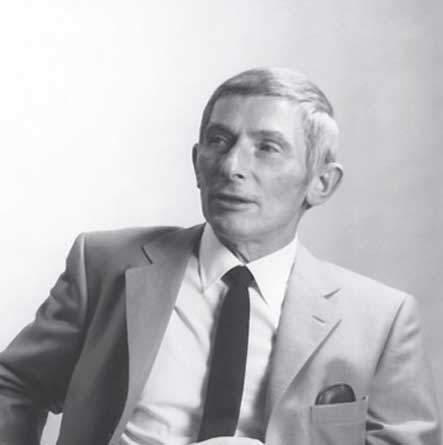
Chaired the jury from the first competition until 1989.
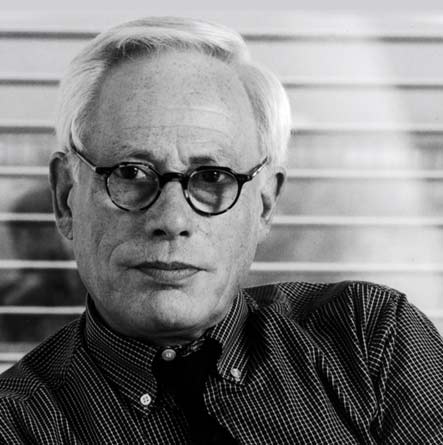
Chaired the jury until 1995.
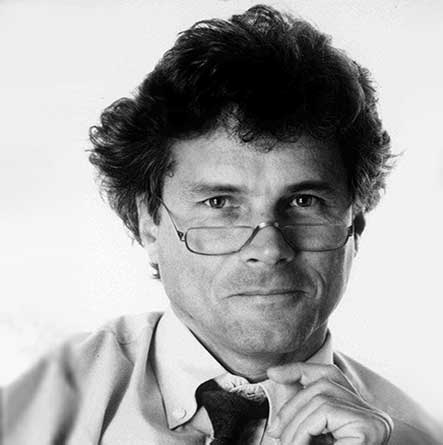
Chaired the jury from 1999
until 2009.
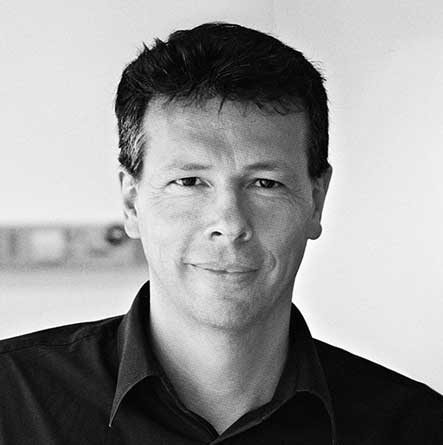
Chairs the jury since 2012.
Organization & Support



The competition is organized by Braun, a Procter & Gamble brand, and managed by the Braun Design Team in Kronberg, Germany.

The International Council of Societies of Industrial Design, icsid, has supported the BraunPrize since 1992. The endorsement is regarded as a seal of quality for international design competitions.
The beginnings
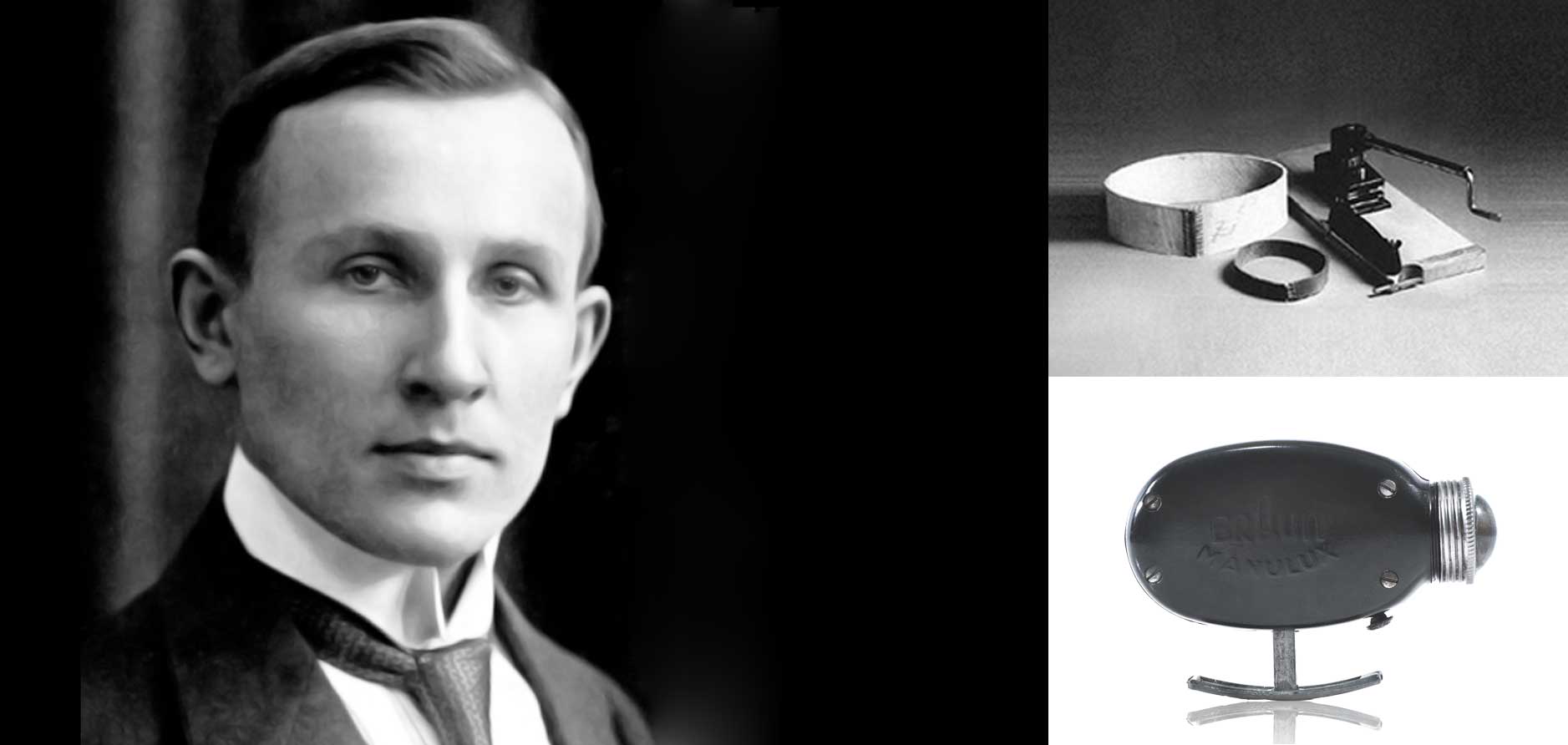
The engineer Max Braun (*1890) established an engineering workshop in Frankfurt/Main ...

The engineer Max Braun (*1890) established an engineering workshop in Frankfurt/Main ...
In 1921, engineer Max Braun established his company in Frankfurt am Main, first making radio parts and by 1929 complete power amplifiers and radio sets. Max Braun was one of the first manufacturers in Europe to combine radios and record players in a single unit. The Braun logo with the distinctive raised and rounded “A” in the middle was born in 1934.
During World War II, Braun was compelled to more or less abandon products for the civilian sector, and in 1944, the Frankfurt factories were nearly entirely destroyed. With 150 employees, Max Braun began rebuilding his company in 1945.
1950 saw the launch of the first electric shaver, the “S 50”, combining an oscillating cutter block with an ultra-thin yet stable steel foil clamped above it. This principle – in further refined and perfected form – is employed in Braun shavers up to the present day.
Max Braun died suddenly in November 1951. His sons Artur (26) and Erwin (30) had to take over company management from one day to the next.
During World War II, Braun was compelled to more or less abandon products for the civilian sector, and in 1944, the Frankfurt factories were nearly entirely destroyed. With 150 employees, Max Braun began rebuilding his company in 1945.
1950 saw the launch of the first electric shaver, the “S 50”, combining an oscillating cutter block with an ultra-thin yet stable steel foil clamped above it. This principle – in further refined and perfected form – is employed in Braun shavers up to the present day.
Max Braun died suddenly in November 1951. His sons Artur (26) and Erwin (30) had to take over company management from one day to the next.
The Braun Brothers: vision and enterprise
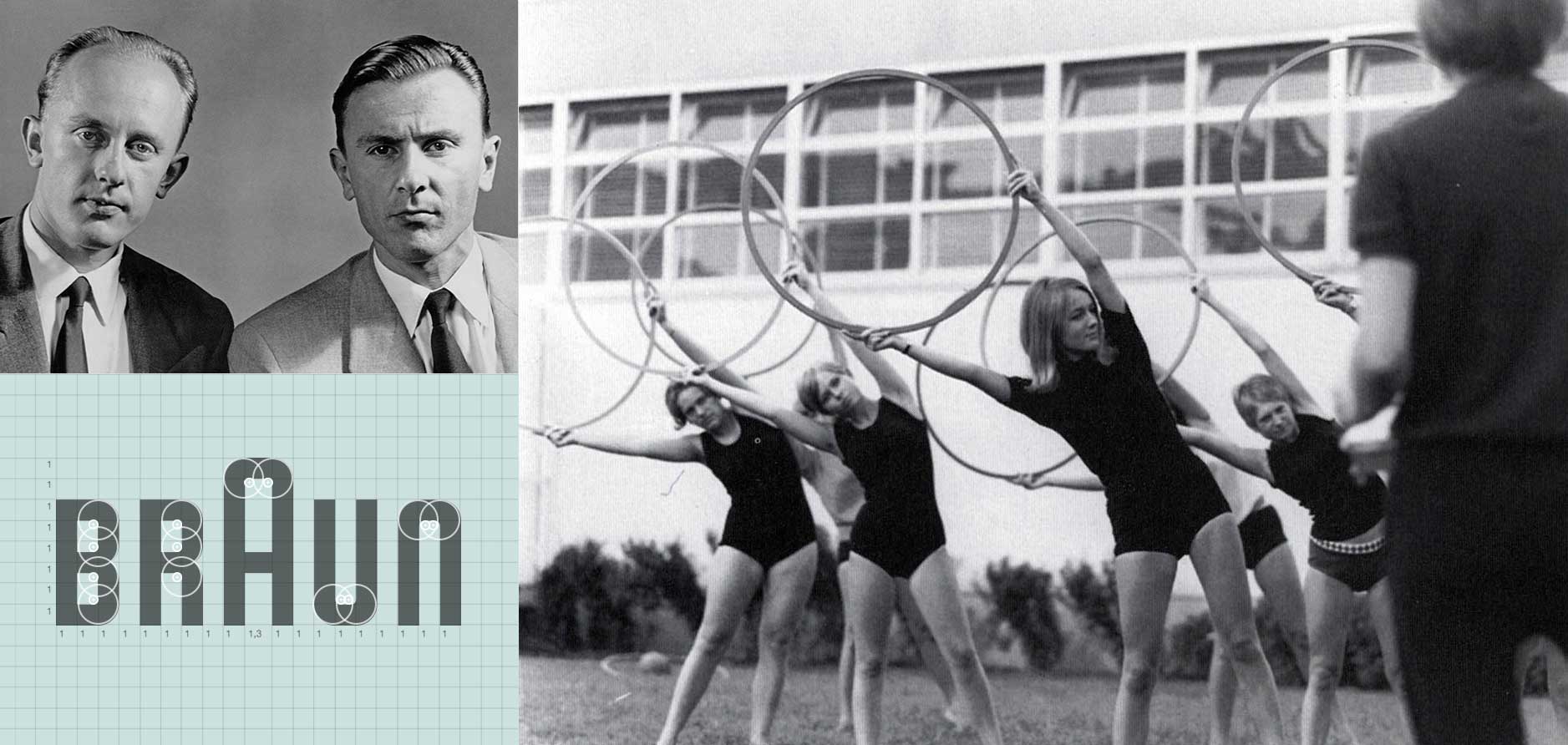
The founder’s sons were not entirely unprepared ...

The founder’s sons were not entirely unprepared ...
... Erwin had a degree in business, and Artur was a trained engineer.
The brothers had also been deeply affected by their negative wartime experiences and the Nazi dictatorship.
Their dream of a better future was based on respect for people – employees and customers. To make this vision a reality, they developed a comprehensive entrepreneurial concept. As early as 1951, the Braun brothers introduced an employee magazine, soon followed by the groundbreaking Braun Health Center and a modern cafeteria offering high-quality, nutritious meals – traditions continued up until today.
For the radio/phono segment, which had started to stagnate, Erwin Braun saw market potential only if the company were able to successfully set itself apart. Traditional products - high-gloss, lavishly decorated boxes of dark wood, with loudspeakers hidden behind gold-threaded speaker grilles, were no longer in tune with the times. But who in Germany could help develop and implement new design concepts?
Dr. Fritz Eichler, art historian, set designer, film director and a war comrade of Erwin Braun, was their first ally. At first assigned to producing new advertising films, he soon took on a management role and – from 1956 on in his official capacity as Head of Design – played an instrumental role in creating the new image.
The brothers had also been deeply affected by their negative wartime experiences and the Nazi dictatorship.
Their dream of a better future was based on respect for people – employees and customers. To make this vision a reality, they developed a comprehensive entrepreneurial concept. As early as 1951, the Braun brothers introduced an employee magazine, soon followed by the groundbreaking Braun Health Center and a modern cafeteria offering high-quality, nutritious meals – traditions continued up until today.
For the radio/phono segment, which had started to stagnate, Erwin Braun saw market potential only if the company were able to successfully set itself apart. Traditional products - high-gloss, lavishly decorated boxes of dark wood, with loudspeakers hidden behind gold-threaded speaker grilles, were no longer in tune with the times. But who in Germany could help develop and implement new design concepts?
Dr. Fritz Eichler, art historian, set designer, film director and a war comrade of Erwin Braun, was their first ally. At first assigned to producing new advertising films, he soon took on a management role and – from 1956 on in his official capacity as Head of Design – played an instrumental role in creating the new image.
The new design concept and start
of the era Dieter Rams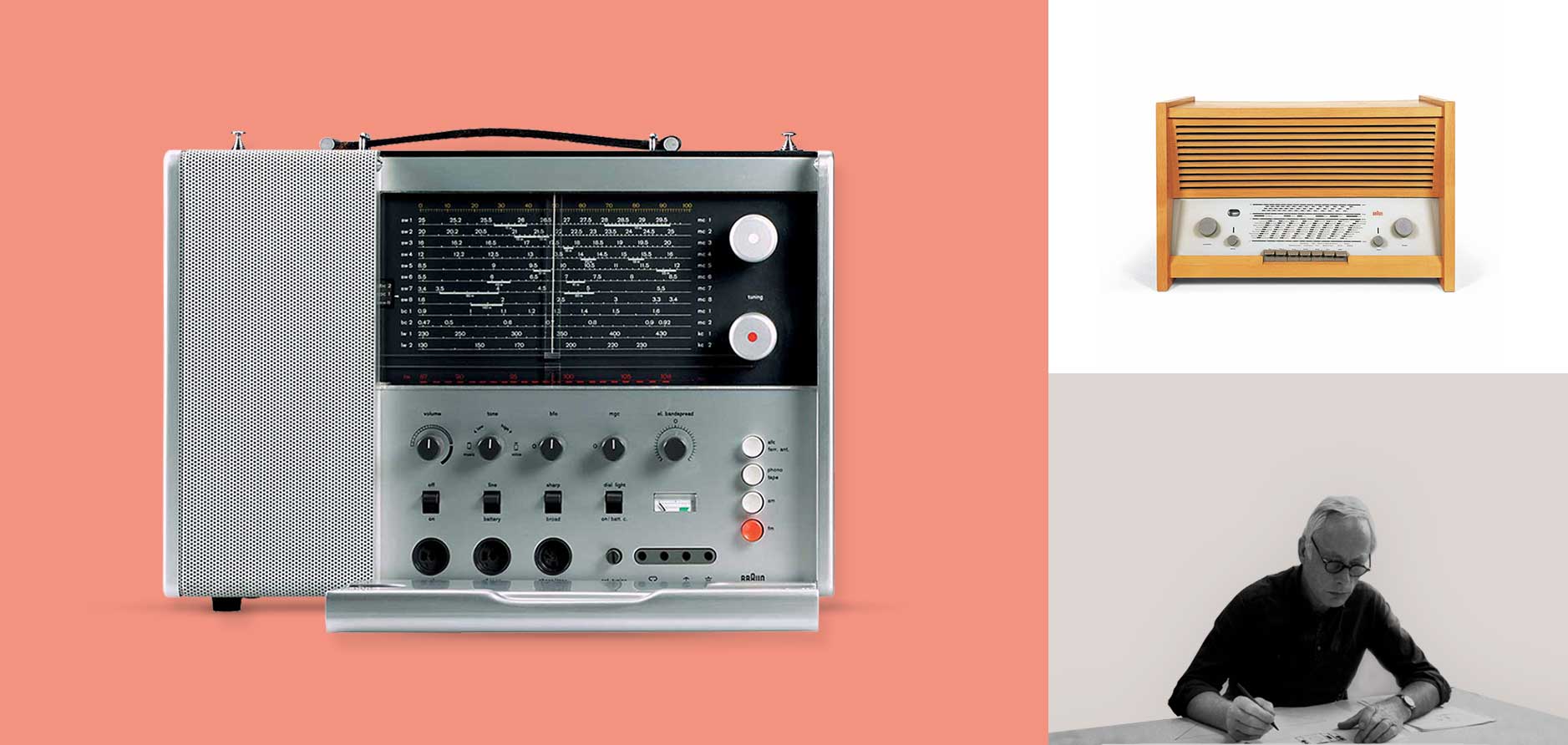
The starting point for the new design concept was a positive assessment ...
of the era Dieter Rams

The starting point for the new design concept was a positive assessment ...
... of the potential shopper: intelligent and open-minded, someone who appreciated unobtrusive products which left him or her ample freedom for personal fulfilment.
After a landmark speech by designer Wilhelm Wagenfeld on industrial design and the responsibility of the entrepreneur, Erwin Braun felt so strongly confirmed in his plans that he immediately commissioned Wagenfeld with a design assignment. Seeking further designers, in late 1954 Braun discovered the fledgling
“Hochschule fuer Gestaltung” design academy in Ulm, which set out to carry on the work of the Bauhaus movement disbanded by the Nazis in 1933. With the two lecturers Hans Gugelot and Otl Aicher, a team had been created that was to go down in design history.
In only eight months, they succeeded in giving the entire Braun product line – from portable radios to music cabinets – a completely new face. The first major launch event was the 1955 Electronic Exhibition in Duesseldorf. The stand developed by Otl Aicher signalized even from afar that something fundamentally new was being offered there.
The hiring of 23-year-old Dieter Rams, likewise in 1955, had far-reaching implications. Rams started as an interior designer and soon became the nucleus of Braun’s own design department. Headed by Fritz Eichler, it commenced its work, with freelance help, in 1956. Gradually, the new design style spread not only to the entire product line, but also to all communications instruments – from stationery and use instructions all the way to advertising. This gave Braun a corporate identity long before the term was even coined.
After a landmark speech by designer Wilhelm Wagenfeld on industrial design and the responsibility of the entrepreneur, Erwin Braun felt so strongly confirmed in his plans that he immediately commissioned Wagenfeld with a design assignment. Seeking further designers, in late 1954 Braun discovered the fledgling
“Hochschule fuer Gestaltung” design academy in Ulm, which set out to carry on the work of the Bauhaus movement disbanded by the Nazis in 1933. With the two lecturers Hans Gugelot and Otl Aicher, a team had been created that was to go down in design history.
In only eight months, they succeeded in giving the entire Braun product line – from portable radios to music cabinets – a completely new face. The first major launch event was the 1955 Electronic Exhibition in Duesseldorf. The stand developed by Otl Aicher signalized even from afar that something fundamentally new was being offered there.
The hiring of 23-year-old Dieter Rams, likewise in 1955, had far-reaching implications. Rams started as an interior designer and soon became the nucleus of Braun’s own design department. Headed by Fritz Eichler, it commenced its work, with freelance help, in 1956. Gradually, the new design style spread not only to the entire product line, but also to all communications instruments – from stationery and use instructions all the way to advertising. This gave Braun a corporate identity long before the term was even coined.
Evolution through the decades
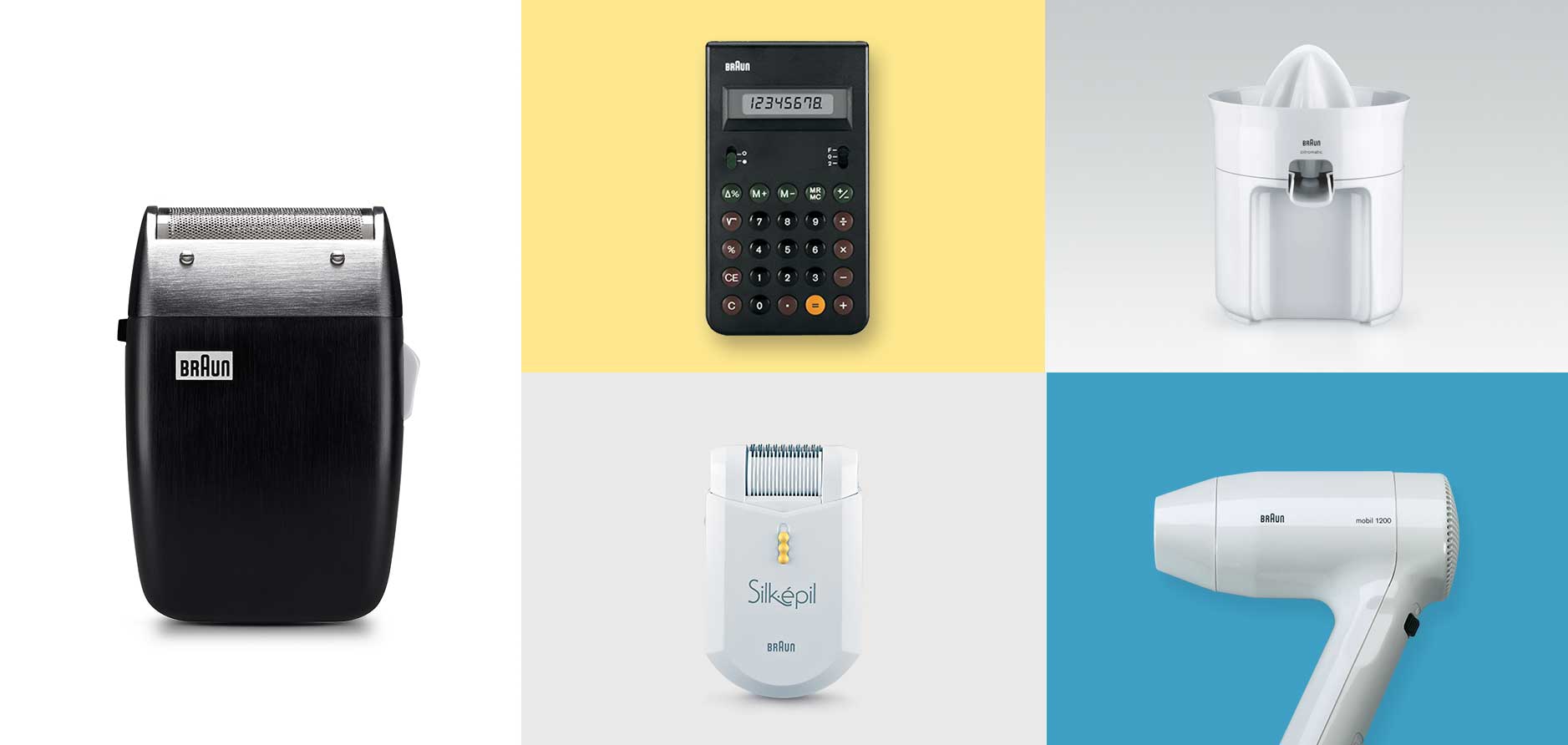
The new design concept implemented by Dieter Rams and the Braun design team ...

The new design concept implemented by Dieter Rams and the Braun design team ...
... quickly gained fame; as early as in the late 1950’s, Braun products were selected for prestigious permanent collections such as at the MoMa in New York. During this period, Braun’s traditional strength in radios, record players and combined hi fi units continued. However, starting in the 1960’s, Braun electric shavers, led by the renowned sixtant, became a key business segment, as did household products such as kitchen machines and juicers, which were launched in the new design look in the late 1950’s and expanded to international markets in the 1960’s.
In the 1970’s and 80’s additional product segments became important and made new demands on the Braun design team. Hand-held hair dryers were developed in the 70’s, in the late 70’s also styling appliances. These personal care products required design that focused on ergonomics and ease of handing. Clocks, watches and calculators were important primarily in the 1980’s and set new design standards for clarity and reduction, combined with innovative technology. During the 1980’s Braun concluded its presence in the HiFi business with an exclusive ‘Limited edition’ to then focus on the more lucrative small appliance sector, in particular personal care and household products. Shavers became – and still are today - the biggest business segment for Braun, featuring design innovations such as two-component molding to achieve soft nubs on a hard housing, for better handling.
In the 1990’s two important business segments emerged: electrical oral care and female hair removal. A unique partnership between Braun and Oral-B led to the creation of electric toothbrushes designed by the Braun design team – a partnership still successful today within P&G. Braun also acquired Silk-épil epilators and expanded this into a leading international brand for female beauty.
Today Braun focuses on the four key segments: male grooming with Braun Series electric shavers, female grooming with Silk-épil epilators, Satin Hair with hair care appliances and household with Multiquick hand blenders and other useful kitchen helpers. The company’s values still share the original vision of the Braun brothers: creating products based on respect for people – employees and customers – and using design as an essential medium to achieve this.
In the 1970’s and 80’s additional product segments became important and made new demands on the Braun design team. Hand-held hair dryers were developed in the 70’s, in the late 70’s also styling appliances. These personal care products required design that focused on ergonomics and ease of handing. Clocks, watches and calculators were important primarily in the 1980’s and set new design standards for clarity and reduction, combined with innovative technology. During the 1980’s Braun concluded its presence in the HiFi business with an exclusive ‘Limited edition’ to then focus on the more lucrative small appliance sector, in particular personal care and household products. Shavers became – and still are today - the biggest business segment for Braun, featuring design innovations such as two-component molding to achieve soft nubs on a hard housing, for better handling.
In the 1990’s two important business segments emerged: electrical oral care and female hair removal. A unique partnership between Braun and Oral-B led to the creation of electric toothbrushes designed by the Braun design team – a partnership still successful today within P&G. Braun also acquired Silk-épil epilators and expanded this into a leading international brand for female beauty.
Today Braun focuses on the four key segments: male grooming with Braun Series electric shavers, female grooming with Silk-épil epilators, Satin Hair with hair care appliances and household with Multiquick hand blenders and other useful kitchen helpers. The company’s values still share the original vision of the Braun brothers: creating products based on respect for people – employees and customers – and using design as an essential medium to achieve this.
Braun in the present
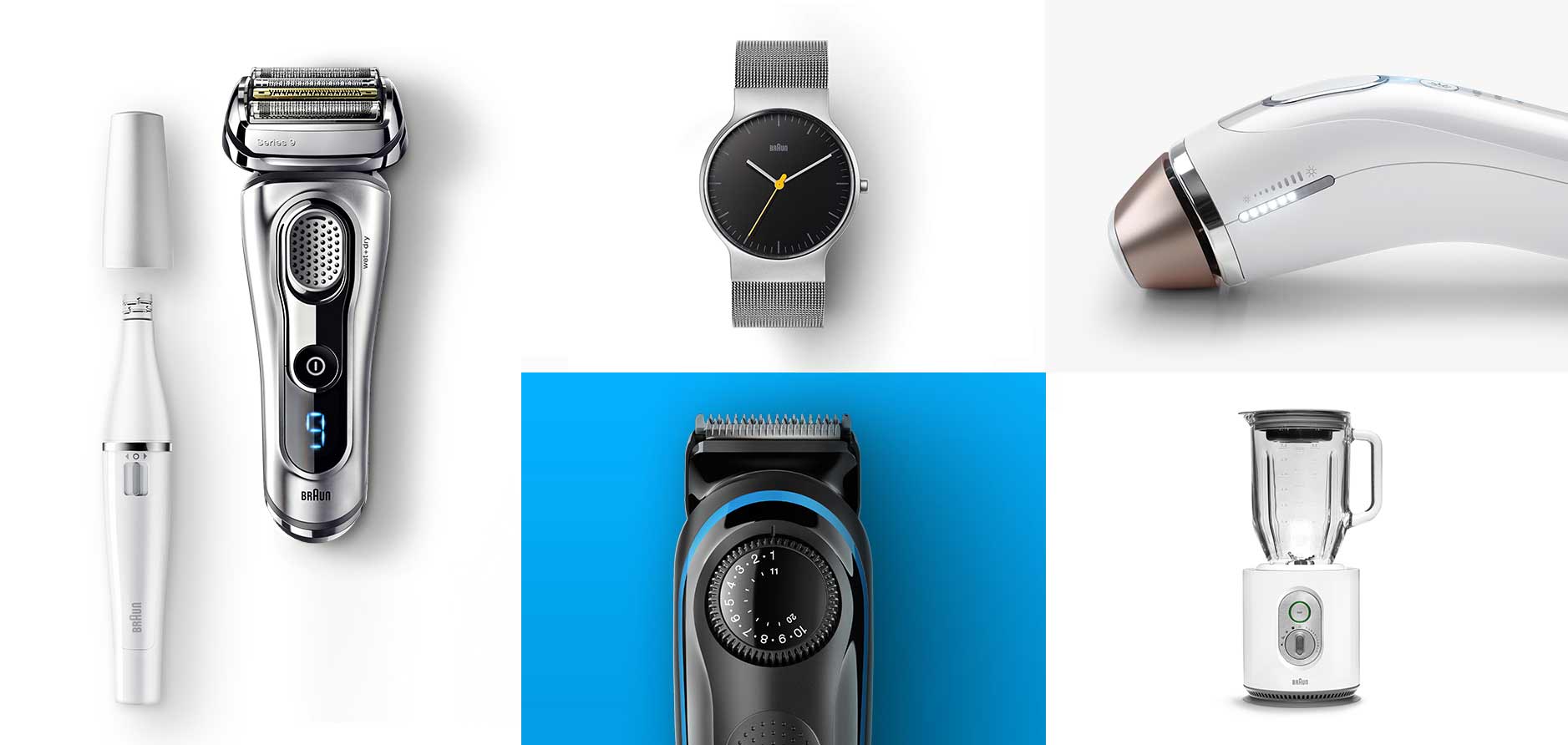 Today, Braun focuses on the four key segments: ...
Today, Braun focuses on the four key segments: ...
 Today, Braun focuses on the four key segments: ...
Today, Braun focuses on the four key segments: ... ... male dry shaving with Braun Series electric shavers, beard trimmers and multi-grooming kits, female electric hair removal with Silk-épil epilators, beauty tools with Braun Face and IPL devices and hair care appliances with the Satin Hair range. In addition, Braun appliances are available in market within a licensing model in the following categories: Health & Wellness with KAZ Inc. (infrared ear thermometers, blood pressure monitors), Clocks & Watches with Zeon Ltd. (clocks, alarm clock, watches) and Household Appliances with De’Longhi SpA (hand blenders, kitchen machines, juicers, coffee machines, kettles, toasters, steam irons).
Braun is not merely a trademark; it stands for an all-encompassing concept built over nearly one hundred years. The company’s values still share the original vision of the Braun brothers: creating products based on respect for people – employees and customers – and using design as an essential medium to achieve this.
As expressed by Braun’s Head of Design Prof. Oliver Grabes, Braun’s design philosophy is based on its rich past tradition, but it continues to evolve to meet consumer needs of the future. This new design language is expressed by “the strength of pure”; it stands for strong, innovative, modern, functional design and will inform all of Braun products in the future.
Braun is not merely a trademark; it stands for an all-encompassing concept built over nearly one hundred years. The company’s values still share the original vision of the Braun brothers: creating products based on respect for people – employees and customers – and using design as an essential medium to achieve this.
As expressed by Braun’s Head of Design Prof. Oliver Grabes, Braun’s design philosophy is based on its rich past tradition, but it continues to evolve to meet consumer needs of the future. This new design language is expressed by “the strength of pure”; it stands for strong, innovative, modern, functional design and will inform all of Braun products in the future.
